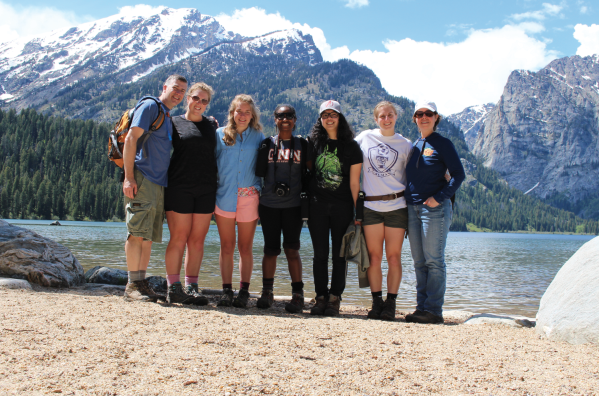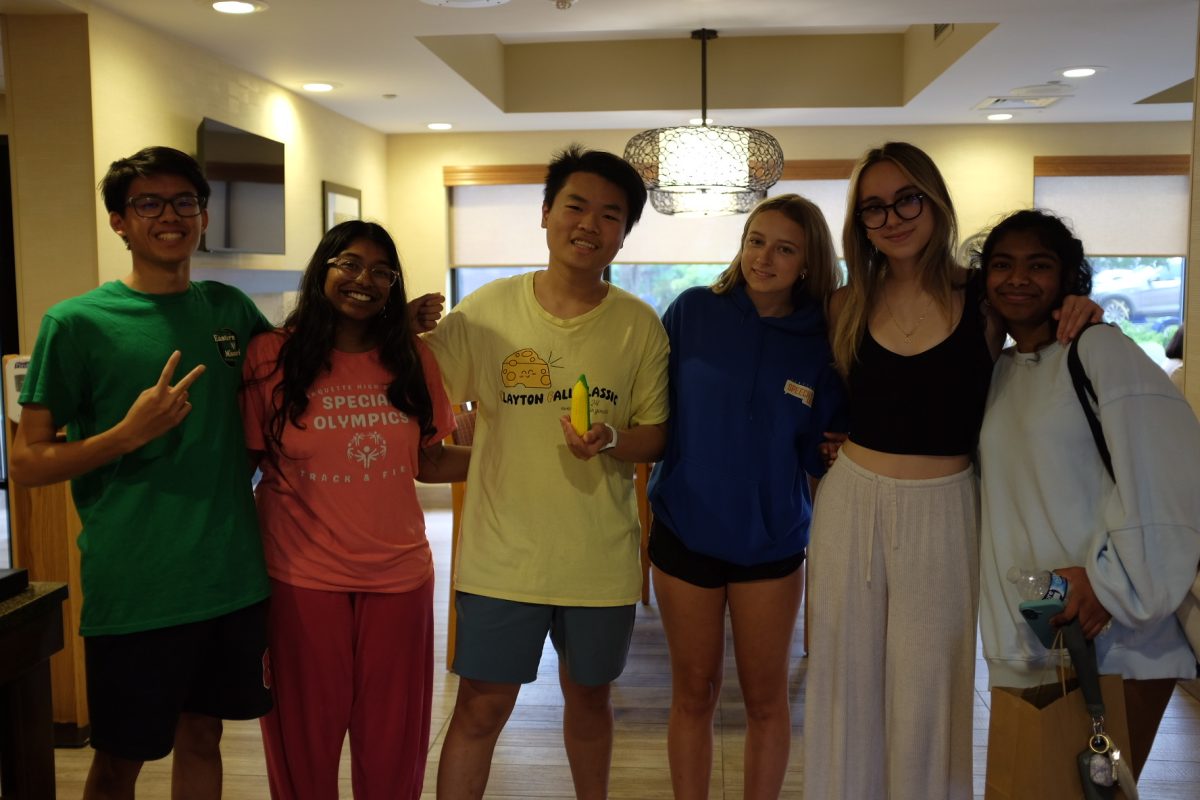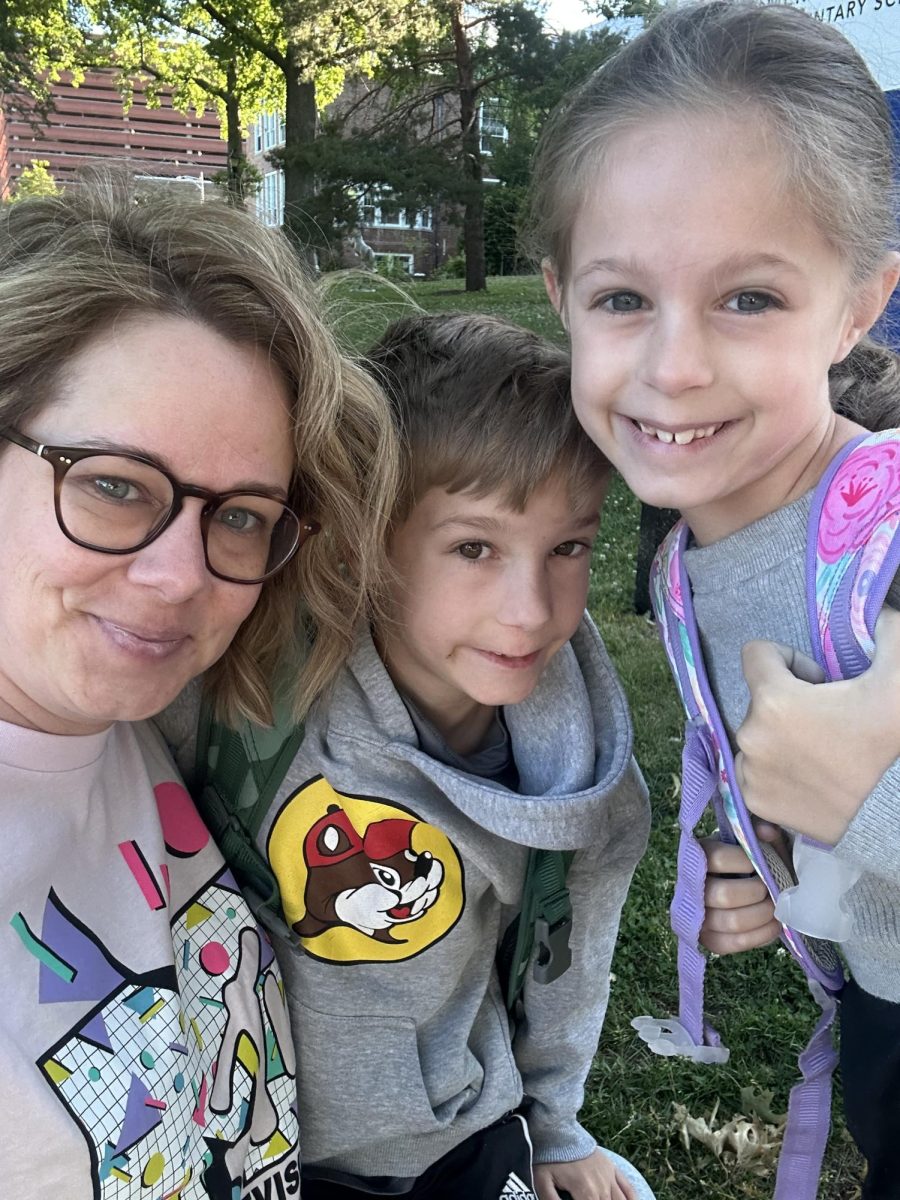Te-Tons of Fun

The CHS group standing in front of Grand Teton National Park where they conducted their research (photo from Ellie Troupis).
October 15, 2015
“We got to school the day that we were leaving, and we loaded up the car and lit out for the west!” CHS Senior Eleanor Troupis said.
Troupis was one of four students who joined CHS Environmental Science teacher Charles Collis on his sixth expedition to Grand Teton National Park in Wyoming. The students left a week before their second semester finals and remained at the Tetons for 16 days, participating in research through the University of Wyoming.
Following informative presentations Collis gave to various science classes at CHS, seniors Audrey Kastner, Michaela Key, Micaela Stoner and Troupis applied in the spring for a spot on the trip.
Collis looks for a variety of qualities in his applicants.
“I need students who I can trust when I’m not directly supervising them,” Collis said. “Ideally, the student is going to be curious about what is going on and work-oriented. We’re really there to do research as our primary objective, so the student has to be a hard-worker even though their summer has already begun.”
The trip consisted of studying the correlation between the mating calls and mating status of sagebrush crickets found in the Grand Tetons.
“The last two summers we’ve attempted to record male calls and release the males back into the field, and then attempt to recapture them to see their mating status change from captured as a virgin to captured again as a non-virgin, and then we’ve got these sound files to go with it,” Collis said. “We can analyze those sound files with software that I have that will allow us to determine how many hours he’s spending vocalizing, when he’s vocalizing and what his chirps sound like, and we try to see if any of those seem like a reasonable predictor of who gets mated first.”
Although capturing the crickets was initially difficult, the students quickly developed techniques to improve their success.
“We’d circle the bushes that the noises were coming from, shine red lights on them because crickets can’t pick up on red frequencies, capture them and put them in the car,” Troupis said.
“You get better at it as you go along,” Kastner said. “It’s pretty difficult at first, just to listen and then use your hearing to figure out where the male is. Sometimes he’ll call, and then he won’t call again. You know he’s near but you can’t find him.”
After bringing the crickets back to the research center, the students massed the crickets, then painted and numbered them for identification. lf the students captured crickets that had already been identified, they checked to see if their mating status had changed.
For Key, the most interesting part of the trip was conducting field work.
“lt was fun being able to see how the crickets mated. Audrey and I got one of the first videos ever of the crickets mating in the field,” Key said.
Kastner was enticed by the research aspect of the trip.
“I’m hoping to major in [biology] in college … That’s a big reason why I went, just to test it out and see if it’s something that I want to be doing for the rest of my life,” Kastner said.
Troupis, on the other hand, was interested in the opportunity to experience the scenery and nature of this national park.
“I love hiking and I’d never been to Wyoming, so I thought it’d be really fun to go on hikes there. l didn’t really go for the crickets to be honest. lt just seemed like a lot of fun,” Troupis said.
Kastner, Key, Troupis and senior Jolena Pang, who went on the trip in 2014, will be continuing to expand on their research throughout the school year.
“I’m going to require them to spend a certain number of hours a week analyzing these sound files and compiling all of the data so we can get this large data set, and then we can do a statistical analysis on it,” Collis said. “We’ll create a poster project that displays our data, what our findings were and our methodology, and we will present that poster project at a couple of research symposiums.”
The first symposium will be at Illinois State University on April 29, 2016. The students also have an opportunity to to present their research at a St. Louis Ecology, Evolution and Conservation (SLEEC) symposium next fall.
Conducting and presenting research is a unique experience because it offers a professional scientific opportunity for high school students.
“This is a much more immersive experience than what you can do in high school,” Collis said. “We put so many hours into just one mysterious question, and to be the first person who gets to know something about the natural world because you did it, it gives me tingles.”







